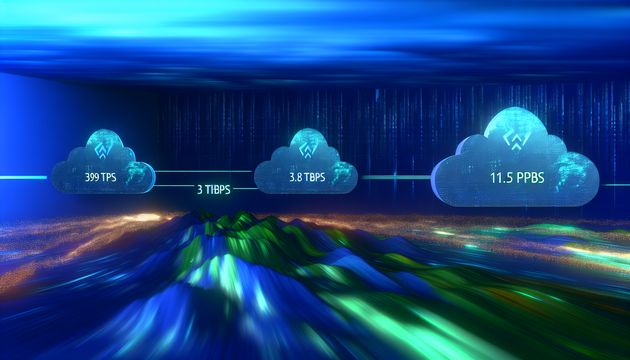
Understanding the Zscaler Data Breach: Lessons in Supply Chain Security
The Zscaler data breach, resulting from the compromise of Salesloft Drift, highlights the hidden dangers within third-party integrations. When Salesloft Drift, a tool that connects with Salesforce, was breached, attackers accessed OAuth and refresh tokens, leading to unauthorized data access in customer Salesforce environments. This incident emphasizes the urgent need for organizations to regularly review their third-party applications to protect sensitive data (BleepingComputer).
Supply Chain Vulnerabilities in Cybersecurity
Impact of Third-Party Integrations
The recent data breach involving Zscaler, following the compromise of Salesloft Drift, highlights the vulnerabilities in third-party integrations. Salesloft Drift, a tool that integrates with Salesforce, was compromised, leading to the theft of OAuth and refresh tokens. This breach allowed attackers to access and exfiltrate sensitive data from customer Salesforce environments (BleepingComputer). The incident shows how third-party applications can be entry points to an organization’s critical data, stressing the need for continuous auditing of these integrations to reduce risks.
The Role of OAuth Tokens in Security Breaches
OAuth tokens, used for authentication and authorization in various applications, were central to the Zscaler breach. Attackers used stolen OAuth tokens to gain unauthorized access to Google Workspace email accounts and Salesforce environments (BleepingComputer). OAuth tokens act like digital keys, granting access to systems without needing passwords. This incident shows the potential for OAuth tokens to be exploited in supply chain attacks, requiring strong token management and monitoring practices to prevent unauthorized access.
Social Engineering and Phishing Tactics
The breach also involved advanced social engineering tactics, including voice phishing (vishing) to deceive employees into linking malicious OAuth apps with their company’s Salesforce instances (BleepingComputer). This approach highlights the human element as a significant vulnerability in cybersecurity, where attackers exploit employee trust and lack of awareness to access sensitive systems. Organizations must invest in comprehensive employee training programs to effectively recognize and respond to such threats.
Broader Implications for Supply Chain Security
The Zscaler breach is part of a broader trend of increasing supply chain-related cyberattacks. Reports indicate a 40% increase in such breaches over the past two years, with nearly one-third originating from third-party vendors or partners (SecureWorld). This trend underscores the interconnected nature of modern supply networks, where a single weak link can compromise multiple organizations. As supply chains become more digitized and AI-driven, they present lucrative targets for state-aligned hackers and cybercriminal gangs. Organizations must prioritize securing their supply chains to prevent cascading operational and financial crises.
Recommendations for Strengthening Supply Chain Security
To mitigate the risks associated with supply chain vulnerabilities, organizations should adopt a multi-faceted approach:
-
Continuous Auditing and Monitoring: Regularly audit third-party integrations and monitor for unusual activity. Implementing automated tools to detect and respond to anomalies can help identify potential breaches early.
-
Principle of Least Privilege: Enforce the principle of least privilege for all third-party applications, ensuring they only have access to the data and systems necessary for their function (CyberMaterial).
-
Robust Authentication Mechanisms: Strengthen authentication mechanisms, such as multi-factor authentication (MFA), to protect against unauthorized access through compromised OAuth tokens.
-
Employee Training and Awareness: Conduct regular training sessions to educate employees on recognizing phishing attempts and other social engineering tactics. Encourage a culture of vigilance and reporting suspicious activities.
-
Incident Response Planning: Develop and regularly update incident response plans to quickly and effectively address breaches when they occur. Collaborate with cybersecurity experts and incident response firms to enhance response capabilities (The Stack).
By implementing these strategies, organizations can better protect themselves against the growing threat of supply chain cyberattacks, safeguarding their data and maintaining operational integrity.
Final Thoughts
The Zscaler breach is a cautionary tale in cybersecurity, highlighting the intricate web of dependencies in modern supply chains. As organizations increasingly rely on third-party vendors, the potential for cascading failures grows. This breach, part of a broader trend of rising supply chain attacks, emphasizes the necessity for robust security measures, including continuous auditing, least privilege principles, and comprehensive employee training (SecureWorld). By adopting these strategies, companies can better protect themselves against the evolving landscape of cyber threats.
References
- Zscaler data breach exposes customer info after Salesloft Drift compromise, 2025, BleepingComputer source url
- Supply chain threats in 2025: AI and API vulnerabilities, 2025, SecureWorld source url
- Salesloft breach exposes OAuth tokens, 2025, CyberMaterial source url
- Zscaler breach details, 2025, The Stack source url



